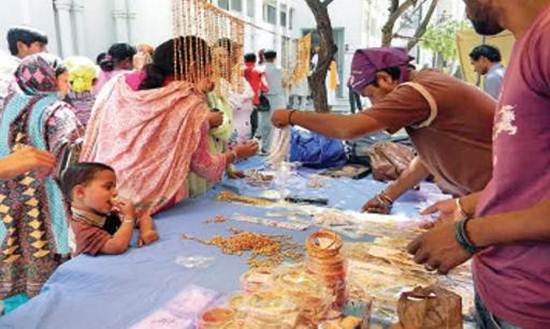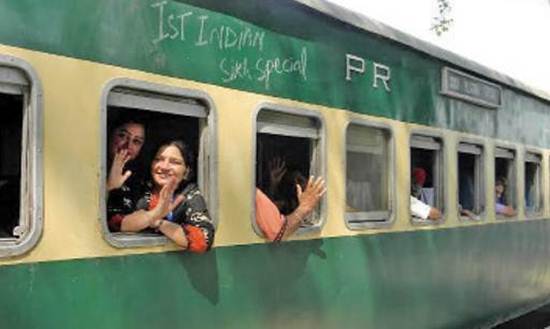Baisakhi festival — an ancient tradition of the Punjab
ByAMJAD IQBAL
Dawn, April 19th, 2015
|
Pilgrims take an ablutionary dip in the fresh water of the sacred pond at Gurdwara Punja Sahib. |
The festival of Baisakhi is an ancient tradition of the Punjab region, a harvest festival which marks the beginning of a new year. It was once celebrated in Punjabi villages, on both sides of the border, with village fairs or melas. Baisakhi is especially important in Sikhism, as on this day in 1699, the 10th Guru of the Sikhs laid the foundation of the Panth Khalsa, the body of initiated Sikhs.
 |
Karamat Masih, a Christian sanitary worker at Gurdwara Punja Sahib, serves the temple round the clock to ensure cleanliness is maintained. He said he is proud to serve this holy place and the devotion of thousands to their faith, inspires him. |
According to Sikh tradition, the Guru addressed the congregation on the day of Baisakhi from a tent on a hill. He drew his sword and asked for a volunteer, willing to sacrifice his head. No one answered his first call, or the second call, but on the third call, a person called Daya Ram came forward and offered his head.
 |
Women pilgrims look at imitation jewellery at a stall at Punja Sahib. For centuries, people have shopped for bangles and jewellery at Baisakhi fairs and festivals. |
Guru Gobind Singh took the volunteer inside the tent, and emerged shortly, with blood dripping from his sword. He then demanded another head. One more volunteer came forward, and entered the tent with him. The Guru again emerged with blood on his sword. This happened three more times. Later, the five volunteers came out of the tent unharmed. These five, who were willing to sacrifice their lives for their Guru, were called Panj Piare (“the five beloved ones”) and became the first members of the Khalsa.
 |
Women wave as they set off for their journey back home to India on a special pilgrim train. — Photos by the writer |
Amrit or holy water was offered to these men. Drinking ‘Amrit’ was symbolic of their commitment to fight atrocities and social evils. Each year, pilgrims from all over the world come to Nankana Sahib and Gurdawara Punja Sahib for Baisakhi celebrations.
 |
Goband Singh, a student of Khalsa School Peshawar, leads the traditional Khalsa march during Baisakhi festival at Punja Sahib, signifying gallantry. The students raised Sikh traditional slogans of bravery and took rounds of the temple. / Jora Ghar (shoe house) set up for the safe-keeping of thousands of pairs of shoes, taken off by devotees before entering the temple. Dozens of volunteers work round the clock to ensure the shoe bank runs smoothly and no pair is lost. |
Nankana Sahib is believed to be the birthplace of Baba Guru Nanak, the founder of Sikhism and the last Sikh Guru, Govind Singh Maharaj, settled at Hassanabdal.
The quiet town of Hassanabdal comes alive with festivity with the arrival of pilgrims. For centuries the economy of this town has revolved around the Gurdwara Punja Sahib. This year, 2,000 Sikh pilgrims arrived from across the border and 1,500 devotees came from the UK, US, Canada and Malaysia.
Traditionally, during their stay at a Gurdwara, Sikh pilgrims sleep on the floor. The festival begins with the recitation of the Guru Granth Sahib, the Sikh holy book. The entire 1,430 pages of the text are read during these three days. The celebrations culminate with the end of the recitation on the third day of the Besakh (April 14) and the ‘Bhog’, or conclusion ceremony is performed.
